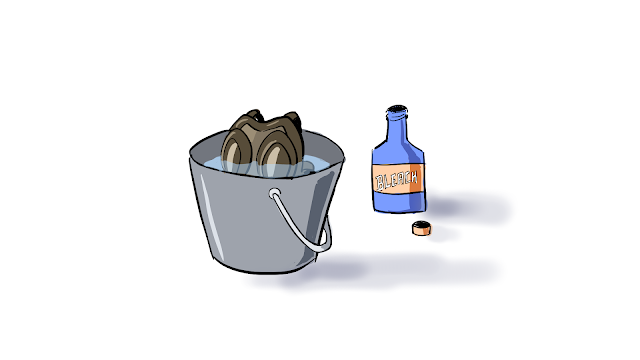47: How to Use a Gas Mask
Q: How can I effectively use a gas mask to protect myself?
💁Tracy:
In addition, when using a gas mask, you also should pay special attention to the following:
1) Complete disinfection
After you return home, the surface of the gas mask may house viruses carried by other people's airborne respiratory droplets. Therefore, after removing the filter or canister, soak the mask in bleach for half an hour to fully disinfect it. If you use your mask frequently, but don't thoroughly disinfect it every time, you may increase your risk of infection.
2) Timely and judicious replacement of the filter/canister
💁Tracy:
- Wash and disinfect your hands before attempting to wear the mask.
- Open the canister lid of the gas mask and put the mask on.
- Check that you have ensured a proper fit:
Wash and disinfect your hands (again). Use one hand to block the mouth of the canister and try to inhale. If you can still do so normally with the canister blocked, or if you hear air leaking through the edges of the mask as you breathe, it has not been properly worn, or else the gas mask itself leaks.
Once you are sure that the mask is sealed, tilt your head down and try again; and then again with your head tilted up. This is important and should not be skipped! Only if, with the canister blocked, you cannot breathe at all three angles, have you confirmed that the mask is being properly worn to manufacturing specifications. After all, you don’t want any unfiltered air leaking in, under any circumstances!
- When you return inside, first take off the gas mask, then immediately close the canister lid and wash your hands.
- Carefully wipe the mask with 70% alcohol or disinfectant wipes. Wipe the outside first, then the inside, paying special attention to the edges and gaps. Be careful not to let any disinfectant into the cartridge (filter) in the canister.
- Put the gas mask in a clean, sealed bag.
- Wash your hands again, and your face.
In addition, when using a gas mask, you also should pay special attention to the following:
1) Complete disinfection
After you return home, the surface of the gas mask may house viruses carried by other people's airborne respiratory droplets. Therefore, after removing the filter or canister, soak the mask in bleach for half an hour to fully disinfect it. If you use your mask frequently, but don't thoroughly disinfect it every time, you may increase your risk of infection.
2) Timely and judicious replacement of the filter/canister
- Once the filter or canister is soiled or damaged, or impairs your breathing, discard and replace it.
- If you smell smoke or mud through a gas mask, that means the canister is leaking, or the filter is not placed correctly.
- Gas masks typically require immediate replacement of the filter or canister after 40 hours of wear.
- Always take some regular masks with you when you go outside with the gas mask. If you discover that the filter or canister is contaminated or damaged, you can minimize your risk by changing to a regular mask.
References
[1] https://www.cdc.gov/niosh/npptl/topics/respirators/factsheets/respfact.html
[2] https://www.cdc.gov/niosh/npptl/topics/respirators/disp_part/respsource1quest1.html
[2] https://www.cdc.gov/niosh/npptl/topics/respirators/disp_part/respsource1quest1.html
[4] "N95 Respirators and Surgical Masks (Face Masks)". U.S. Food and Drug Administration. 11 March 2020. Retrieved 28 March 2020.
Writing: Yuehan Wu; Translation: Xiaoming Dong; Proofreading: Helen Shih, Peter Hu; Artwork: Peter Hu
Disclaimer and Copyright © 2020 United Chinese Americans





